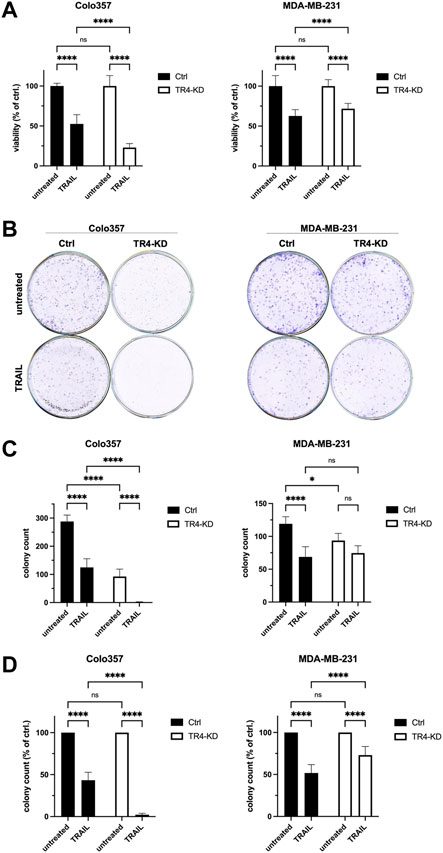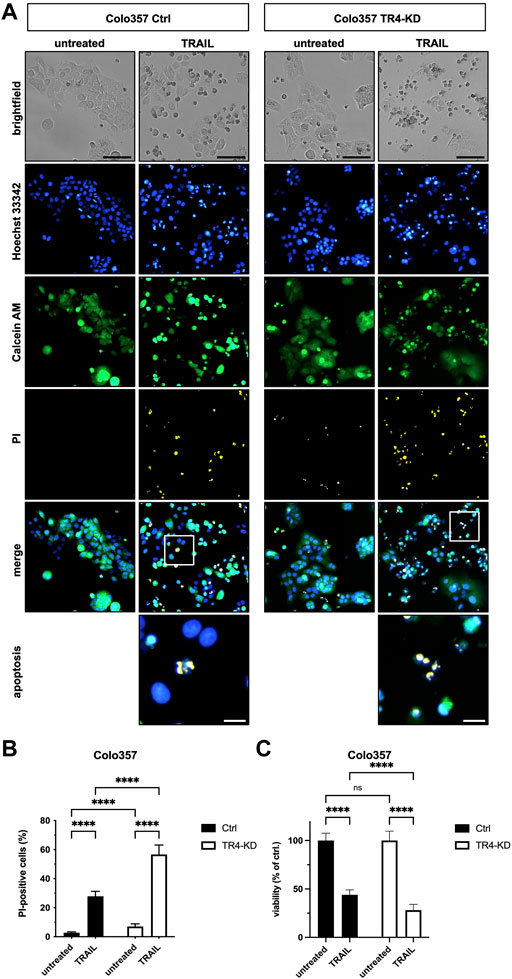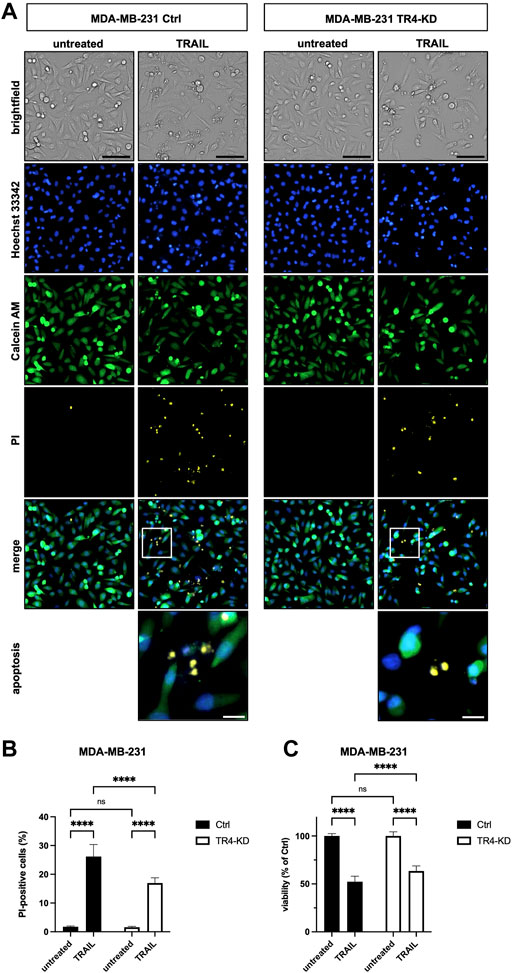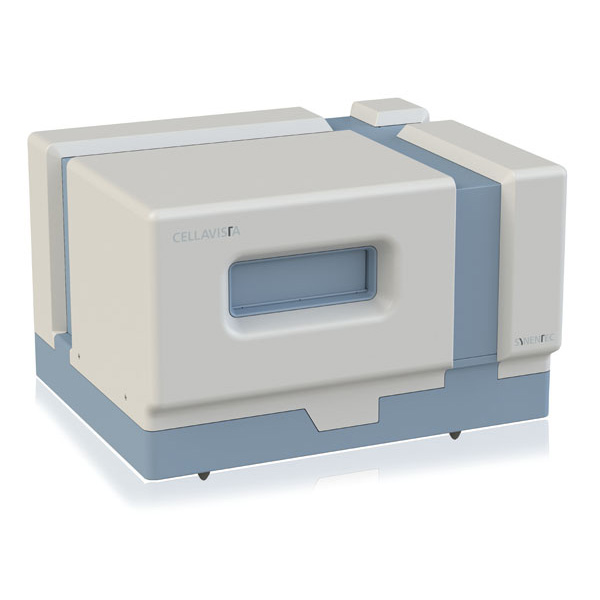In a recent publication from a research group led by Professor Dr. rer. nat. Anna Trauzold, there was a profound demonstration of the usefulness of SYNENTEC‘s CELLAVISTA® Cell Imager and YT®-Software. The study delved into the impact of endogenous TRAIL-R4, a receptor that contains a truncated death domain but still has a signaling-competent intracellular part.
While it’s thought that this receptor has anti-apoptotic functions, its mechanism of action is still not fully understood. To gain a deeper understanding of this complex process, the team used SYNENTEC’s CELLAVISTA® and YT®-Software, which helped quantify cell death and observe the formation of fragmented apoptotic cells and apoptotic bodies.
This research is an important step in understanding the role of death receptors and their impact on cell death.
Find a summary below of how the CELLAVISTA® and YT®-Software played a crucial part in this study:
Figure 2. Opposite impact of TRAIL-R4 on cell viability and clonogenic survival after TRAIL treatment in Colo357 and MDA-MB-231 cells.

(B) Clonogenic survival assay of untreated and TRAIL-treated Colo357 and MDA-MB-231 TR4-KD cells relative to Ctrl cells. Cells were seeded at 1 × 104 cells/well in 6-well format as technical triplicates and stimulated with TRAIL (Colo357—50 ng/ml; MDA-MB-231—100 ng/ml) for 24 h, respectively or left untreated. After 6 days of further incubation without TRAIL colonies were visualized and quantified by CELLAVISTA®️ imager and subsequently stained with crystal violet dye. Crystal violet stained colonies; shown is one representative well of each condition from one related experiment.
(C) Total colony count per well quantified by CELLAVISTA®️ imager.
Figure 3. Figure 3. Knockdown of TRAIL-R4 increases TRAIL-mediated cell death of Colo357 cells.

Cytotoxicity/viability assay. Colo357 control (Ctrl) and TRAIL-R4-knockdown (TR4-KD) cells were seeded at 1 × 104 cells/well in 96-well format and 24 h later stimulated with 50 ng/ml TRAIL for additional 24 h or left untreated. Subsequently, cells were stained with Propidium Iodide (PI), Calcein AM and Hoechst 33342 and visualized and quantified by CELLAVISTA®️ cell imager.
Figure 4. Knockdown of TRAIL-R4 impairs TRAIL-mediated cell death of MDA-MB-231 cells.

Cytotoxicity/viability assay. MDA-MB-231 control (Ctrl) and TRAIL-R4-knockdown (TR4-KD) cells were seeded at 1 × 104 cells/well in 96-well format and 24 h later stimulated with 100 ng/ml TRAIL for additional 24 h or left untreated. Subsequently, cells were stained with Propidium Iodide (PI), Calcein AM and Hoechst 33342 and visualized and quantified by CELLAVISTA®️ cell imager.




